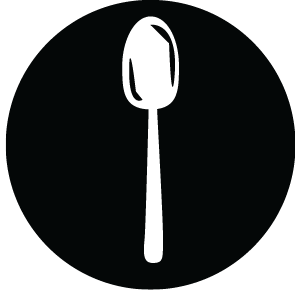Sourdough bread is best known for its tangy flavor and chewy texture, and is treasured by many bread lovers because it's so versatile. Though it seems like a tough-to-make speciality bread, fresh sourdough can actually be made at home from three simple ingredients: water, flour, and salt. It's tempting to get started making sourdough right away, isn't it? But before learning how to bake this wonderful bread yourself, you should first know how to answer the following questions: what is sourdough, how is it made, and how is it different from other breads? Knowing this information is actually super helpful before you try making it yourself.
What Is Sourdough?
A delicious sourdough bread should have an inside with big holes, a chewy crust, and a complex taste and aroma. Let’s not forget about the sour, tangy flavor, which can be best explained by delving into how sourdough is made.
The baking process begins with a starter, which consists of flour and water. You have to determine the hydration level of the starter to see how it's going to act. Using the formula of the total amount of water divided by the total amount of flour, you want to maintain a starter that is 100% hydrated (i.e. for 100 g of flour, add 100 g of water) as it is easier to mix and allows for quicker feeding. Over several days, additional flour and water are added to the fermenting starter, providing a home for the friendly bacteria Lactobacillus and wild yeast. They thrive in a symbiotic relationship, as the yeast help feed the bacteria while the bacteria provides an acidic environment that the natural yeast likes.
During this fermentation process, Lactobacillus converts the sugars in the dough into lactic and acetic acid. Basically, this is what gives sourdough its tangy flavor. When your starter is active and ripe, it is ready to be added to a dough. Together, they are left to rise for several hours before being transformed in the oven into a delicious bread full of holes.
What Makes Sourdough Unique
Though making bread seems to require the same basic ingredients, sourdough is distinct from other types of bread due to this one factor: yeast. Most bakers use cultivated yeast that's been dried, preserved, and formed into a powder. White bread contains more ingredients, such as sugar, and relies on cultivated yeast to rise, so the process is faster.
With sourdough bread, bakers treat yeast differently by creating a starter for the wild yeast to thrive in. Sourdough is also less likely to go bad, as it retains much of its moisture as it ages and its acidity due to the fermentation helps prevent mold growth. Not only is the distinct fermentation of sourdough important, but its smell, texture, and nutritious health benefits also provide a more complete picture of what is sourdough.
Health Benefits of Sourdough
Sourdough is one of the healthiest breads for you since it's made with flour and water, and usually does not contain sweeteners or oils. Low in sugar and high in protein, sourdough fermentation makes sourdough easier to digest and may also slow down the rate at which sugar enters the bloodstream.
As the secret ingredient in what is sourdough is live yeast lactobacillus, which is a probiotics that benefits your gut, the yeast produces lactic and acetic acid to make the nutrients easier for you body to absorb. Say, important nutrients like iron, zinc, magnesium, folic acid, B vitamins, and more.
While these acids make vitamins and minerals in the flour more available to the body, they also cause a gradual increase in blood sugar levels rather than a spike due to its having a low glycemic index (GI). This is great news for people who are diabetic, who will be able to eat bread that doesn’t cause insulin spikes.
Sourdough is one of the easiest, most nutritious homemade breads if you want to make it from scratch. Mix flour and water, wait, and repeat. All you need in addition to these simple ingredients is time. If you're feeling adventurous, here's a sourdough starter guide to get you going on making your own delicious sourdough bread.




